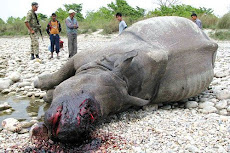Tourism entrepreneurs on Annapurna trail have formed Annapurna Century Tourism Entrepreneurs’ Committee to work for the professional welfare of the entrepreneurs, develop tourism infrastructure and protect the nature and culture of the Annapurna region to attract more tourists.
Around 300 hotel entrepreneurs of Kaski and Myagdi along the world famous trail are affiliated with the committee.
The Annapurna trail is considered one of the top 10 best routes for trekking in the world. Trekking on the route can be completed within seven to nine days.
A two-day workshop held for tourism entrepreneurs by the committee in Dhampus concluded yesterday, by laying stress on infrastructure development, solving problems of tourism entrepreneurs, protecting the nature and culture of the region and investing at least 50 % of the revenue generated from the tourists for local development.
Committee president Kisam Gurung accused the Nepal Tourism Board of discrimination against rural tourism entrepreneurs. Advisor to the committee Tirtha Shrestha inaugurated the workshop. He too accused the authorities concerned of ignoring rural tourism.
The Rishing Nepal 31may,2008
Around 300 hotel entrepreneurs of Kaski and Myagdi along the world famous trail are affiliated with the committee.
The Annapurna trail is considered one of the top 10 best routes for trekking in the world. Trekking on the route can be completed within seven to nine days.
A two-day workshop held for tourism entrepreneurs by the committee in Dhampus concluded yesterday, by laying stress on infrastructure development, solving problems of tourism entrepreneurs, protecting the nature and culture of the region and investing at least 50 % of the revenue generated from the tourists for local development.
Committee president Kisam Gurung accused the Nepal Tourism Board of discrimination against rural tourism entrepreneurs. Advisor to the committee Tirtha Shrestha inaugurated the workshop. He too accused the authorities concerned of ignoring rural tourism.
The Rishing Nepal 31may,2008


